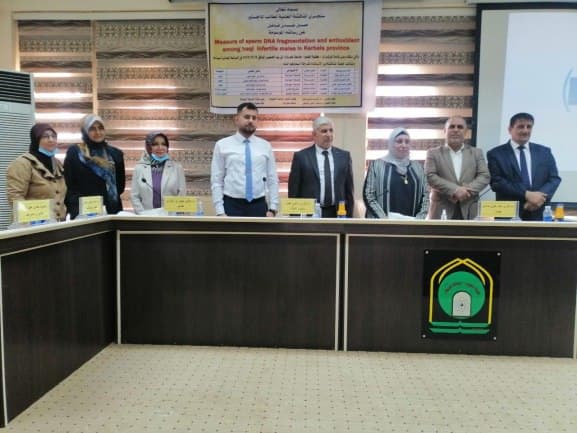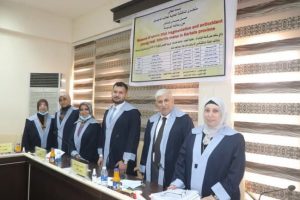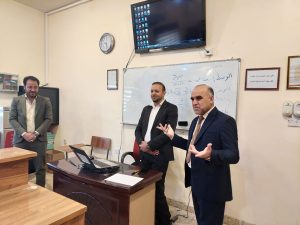The Faculty of Sciences has discussed the M.A. thesis entitled “the breakdown of the DNA of human sperm and its association with antioxidants and sperm criteria before and after their laboratory activation”.
The thesis, presented by the M.A. student, Hussein Abbas Fadhil, from the Department of biology, aims at measuring the rates of sperm DNA breakdown among infertile males and the extent of this breakage correlation with levels of enzymatic and non-enzymatic antioxidants.
The discussion deals with one of the research priorities of the Ministry of Health, which is investigating the causes of infertility in Iraq, methods for measuring sperm DNA breakdown rates among infertile males and the extent of this breakage correlation with levels of enzymatic and non-enzymatic antioxidants on the one hand, and basic standards for sperm on the other hand, the research includes 88 semen samples, which have been classified into three groups according to the traditional criteria for types of sterility, methods for detecting breakdown levels of sperm DNA, and the antioxidant efficacy was determined by spectrophotometric assays, measurement of conventional parameters by CASA apparatus, and the swim-up technique using flushing medium for a selected set of samples.
After statistical analysis of the data, the researcher concludes that the SDF breakdown factor is inversely correlated with most of the criteria that determine the quality of the semen in all samples, indicating that the reasons that lead to a decline in the sperm parameters may be the cause of the breakdown of the DNA, as the analysis showed. Contrast that there is a significant difference in the rate of DNA breakdown between the three groups out of a total of 88 patients. It has found that 36% of them had a relatively moderate breakdown factor while 64% of them had a high saccharification factor. There is a significant difference in the DNA breakdown factor in the samples, as it was found that this technique is efficient in selecting sperms of normal shape and movement and with the correct genetic material for use in performing assisted reproduction operations.
The discussion shows that 64% of infertile patients had a high DNA refractive index. Specimens with a low level of vital manifestations such as those with poor sperm motility, weakness and low sperm count may have a relationship with levels of antioxidants in the sperm or seminal plasma, being an important role in the decline of male fertility and even infertility, and taking antioxidants as nutritional supplements. It can enhance sperm quality and thus fertility.

































































